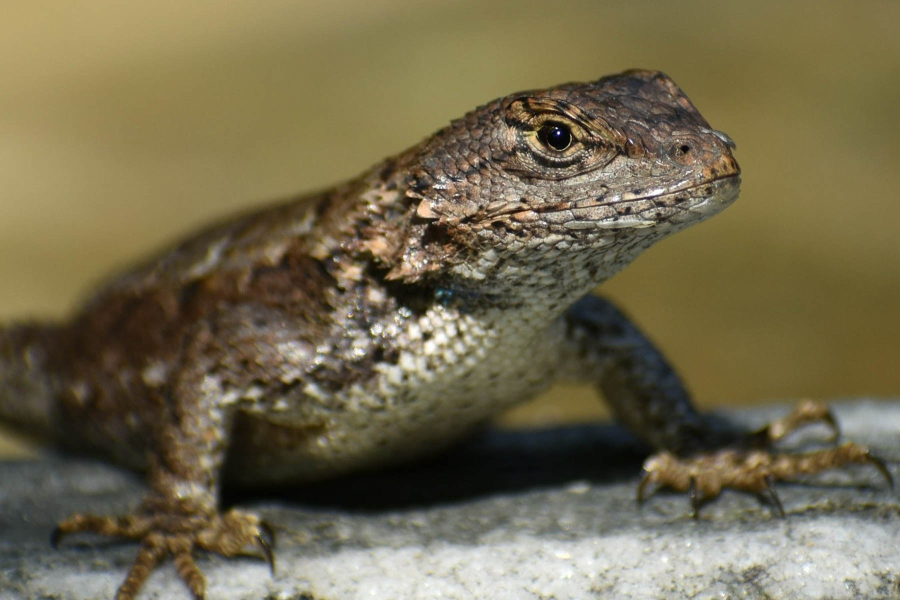The eastern fence lizard: Nature’s master of disguise
A reptile well-versed in defense

With its grayish-brown coloring and rough, pointed scales on its back, at first glance, you may not even see the eastern fence lizard (Sceloporus undulatus) perched on a pine tree branch. This highly arboreal species does an outstanding job of protecting itself by blending in with its surroundings.
Native to much of eastern North America and all throughout the Bay region, the eastern fence lizard inhabits dry, open woodlands of pines and hardwoods. The species is so fond of pine trees in particular, that it is also commonly known as the “pine lizard.” They can often be found perched on trees, logs, stumps or brush piles.
The life of an eastern fence lizard begins often in late summer after a mating season that lasts from April to August. The male will attract the female and claim its territory by flashing the blue scales on their underside. After the mating season, the male and female lizards go their separate ways, leaving their offspring with no parental care, resulting in a high juvenile mortality rate for the species.

Like many other similar species, the eastern fence lizard plays an important role in balancing the Bay ecosystem by preying on a wide variety of insects, spiders and other invertebrates, therefore controlling their population sizes. They also serve as prey for various snakes and carnivorous birds and mammals, but that’s only if they can be caught!
The pressures of predation have allowed for eastern fence lizards to develop a variety of escape tactics. In their natural habitat, these lizards encounter invasive ants, such as red imported fire ants (Solenopsis invicta), the bites of which threaten the lizards with envenomation and, possibly, reduced growth in juveniles. Fire ants also compete with eastern fence lizards for their nesting habitats and prey on their eggs. These encounters can be dangerous and even lethal to the lizards. When attacked by these stinging fire ants, fence lizards twitch their bodies to throw off the attacking ants before fleeing
Twitching to avoid fire ants isn’t their only escape tactic. Because the lizard has a rough, scaled back that blends in with its habitat, they are difficult to find. If their predators are lucky enough to seek one out, they have to be quick enough to attack, as the eastern fence lizard is a speedy species. They also possess fractured planes in the vertebrae of their tails that can cause the tail to break easily if it is seized, often allowing the lizard the chance to escape from predators, with the tail partially regenerating with time.
Although the eastern fence lizard currently has a stable population size, they face various threats that jeopardize this. Climate impacts, particularly the increased frequency of flooding, can have detrimental effects on hatchling populations. And, because the species depends on their ability to blend in with their surroundings to survive, habitat loss poses severe effects on the population.

Comments
There are no comments.
Thank you!
Your comment has been received. Before it can be published, the comment will be reviewed by our team to ensure it adheres with our rules of engagement.
Back to recent stories